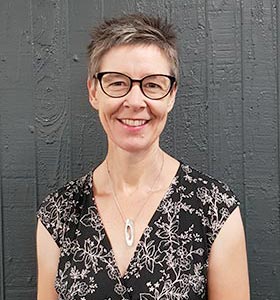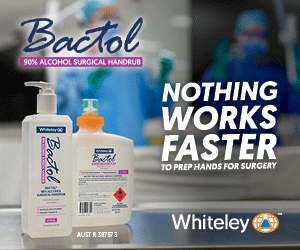What is primary health care, how is it different from primary care and and how can nurses incorporate the principles of primary health care nursing into their practice?
Firstly, what do we mean by primary health care? In 1978, the World Health Organization (WHO) held a conference at Alma-Ata in Russia, called the International Conference on Primary Health Care. WHO member nations accepted the Alma-Ata Declaration, which called for urgent and effective action to develop and implement primary health care throughout the world.
Primary health care was defined as essential health care based on scientifically sound and socially acceptable methods and technology, that was accessible to all people in a community at a cost the community and country could afford. It was an approach to health that went beyond traditional systems of hospital care and concentrated on health equity. It drew on ideas of prevention, reduction of health disparities, collaborative models of health provision (ie participation by communities in decision-making) and integrating health into all social sectors through public policy reform.1
Primary health care is a wide-ranging concept that requires us to view our entire system – including public health, primary care, acute care, health policy and the wider housing, social, food and technology systems – as part of an approach to improving health. In Aotearoa, the terms “primary care” and “primary health care” are frequently used interchangeably, but they are not the same. Primary care is part of primary health care, more often than not referring to care provided in general practice and pharmacy. But providing primary care does not necessarily mean we use a primary health care approach to our practice.
In 2001, the Ministry of Health published the Primary Health Care Strategy, which outlined a comprehensive system of first-line access to health care in New Zealand.2 Nurses were at the forefront of the strategy and the profession held high hopes for a change in the way health services were provided. We hoped nurses would become the primary providers of first-line health care to all New Zealanders.
In 2012, I gave a presentation at the College of Primary Health Care Nurses conference, where I argued for the primary health care approach – that nurses needed to consider the social determinants of health as part of their assessment of an individual or whānau, to identify community resources that could help address the challenges facing whānau, and to advocate for health equity. Nurses could address the social determinants of health using a variety of easy strategies.
However in 2016, I wrote that the recently released New Zealand Health Strategy had failed to identify and promote primary health care as a core approach to improving health outcomes.3 Although we have seen a number of health priorities identified by government since 2016, including equity and sustainability, the 2016 strategy failed to make explicit the importance of primary health care.
So what progress has there been? When the Primary Health Care Strategy was released in 2001, nursing’s vision was for an integrated nursing workforce that spanned the boundaries of the many practice silos we found ourselves in. We saw practice nurses, district nurses, public health nurses, occupational health nurses, school nurses, Well Child/Tamariki Ora, Plunket nurses, Māori and iwi provider nurses and so on, all working together to achieve health in our communities. We coined the phrase “primary health care nursing” to encompass all of these diverse roles under one umbrella. We established the College of Primary Health Care Nurses NZNO, which drew together the practice nurse section with the district nursing and public health nursing sections. We developed standards of practice, we held conferences and we all bought into this vision for an integrated primary health care nursing workforce where we could work much more closely and cohesively to improve health outcomes.
. . . policy is failing to draw on the combined strength that a non-siloed workforce brings to improving health.
Our national policy documents frequently do not recognise the role of nurses who sit outside general practice. Because our political rhetoric is framed around primary care and interpreted at a ministry level as the work of providers predominantly in general practice and pharmacy, this misses a massive proportion of our workforce and fails to recognise the much wider role of nurses working across the community. This means policy is failing to draw on the combined strength that a non-siloed workforce brings to improving health.
Some DHBs tack “community” on to their guidance and we see “primary and community” crop up in the odd document, but this is a far cry from the vision of an integrated and agile workforce able to respond to community need. Individually, we see pockets of excellence in each of our specialty areas, but have we been truly able to draw together as a combined workforce? In some places yes, in others, no. The consistency isn’t there.
One way this is identifiable is in our workforce statistics. Data from the Nursing Council shows us there are 2875 practice nurses and 3440 nurses working in areas such as district nursing, family planning/sexual health, public health, school health, youth health, iwi and Māori health and occupational health. There are a further 4238 who identify as working in primary health care. This is great. Just under half of all nurses working in community settings identify as primary health care nurses. What about the other half? This group, rightly or wrongly, continue to identify within their various practice silos. This is useful from a workforce planning perspective, but if we are still trying to achieve a truly integrated primary health care nursing workforce that spans the various boundaries of our practice, then this speaks volumes to the progress we have (or rather haven’t) made.
What does a primary health care approach to the way we provide nursing care actually mean? There are a useful set of principles that nurses can use to assess and improve our practice.4
1. Accessible health care
This is about ensuring people can access the care we are providing. Nurses can ask themselves:
- How easy is it to get to see a practitioner in your service?
- Do people have to make an appointment, what hours are available, and can they attend outside working hours?
- Do you have the ability to reduce cost for people or allow them to pay it off?
2. Technology
This is about ensuring we use appropriate technology to provide care and that the people we nurse have access to technology that will improve their lives. Telehealth is a good example of where inequities are being addressed using technology – particularly in rural areas.
- How will technology help this person improve their health and how can we help them access that?
- Can they access their own health records and do they have the technology and wifi or data to do this?
- Can we provide these for them, and do they know how to use them?
3. Health promotion
A simple example of using health promotion in nursing practice is when the Health Promotion Agency is running a campaign and we focus on promoting this in our own work.
- What are we doing as a service to promote people’s health?
- Have we reviewed our educational material to make sure it caters for people with all levels of health literacy and language?
- How are we working with our local health promotion team?
4. Cultural sensitivity and cultural safety
- Do I need an update on cultural safety and the Treaty of Waitangi?
- How culturally safe is my practice?
- Do I know what unconscious bias is and how it impacts my practice?
- How do we tap into Whānau Ora approaches in our work?
- Is my service providing equitable care?
- How many Māori are accessing my service and does this reflect their need? What can we do to improve this?
In Nelson, the ratio of Māori patients in our district nursing service is 4 per cent. That neither reflects our Māori population, which is 10 percent, nor does it reflect actual need. What are we doing about this? We’ve joined with our local Māori provider, Te Piki Oranga, and its nursing service, and are working on a joint cultural competence workshop for staff, doing joint visits and providing products and education to Te Piki nurses to support best practice.
5. Intersectoral collaboration
Many people have needs the health system cannot help with.
- If I identify a patient’s need for food, income or housing support, do I know who to contact?
- Do I even ask whether they need this?
6. Community participation
- How do we involve the community in our day-to-day service provision?
- Can we even do this – is it feasible?
- But how do we know our services are meeting community, whānau and individual need if we don’t design them in collaboration with those who we are providing them to?
One way we can draw on the resources around us is to use our nursing students. At the Nelson Marlborough Institute of Technology, third-year nursing students undertake a community needs assessment as part of their course requirements. Why not ask nursing students to focus on your practice or workplace? Get them to do their assessment on your community and the needs of the people who live there. This could help identify what your community see as priorities and help you make decisions about the focus of your practice.
These are just a few of the ways we can integrate the principles of primary health care into our everyday practice. We then have a broad focus and our practice reaches beyond the needs of the individual who may be sitting in front of us to addressing the issues that may lead to them sitting in front of us in the first place. Our challenge is that we are frequently time poor, and stretching beyond the presenting problem means more work. But hopefully these suggestions are things nurses can try.
I want to touch a little more on why the varying interpretations of primary health care and primary care in policy are problematic for nursing.
Policy dictates practice. We need policy to enable funding, direct the development of models of care, and guide the way the health system works. If true primary health care is based on a broad understanding of the social determinants of health, epidemiology, first point of contact care and consumer involvement in decision-making then, actually, while efforts have been made, there is still relatively minimal focus on these areas. Inequalities continue to grow, the social determinants of health are affecting more and more New Zealanders and access to first point of contact care is frequently limited by cost.
Thus not only is our system not focused on a primary health care approach to health improvement, most of our policy rhetoric uses the term primary care, with little distinction between the two. Not only is the Government a little muddled in this respect, but it is also easier for it to focus on silos than on systems.
So if government focus is on primary care, with little understanding of primary health care, and the vast majority of funding continues to go to secondary and tertiary services, where does this leave primary health care nurses? Assuming the vast majority of us do have that wider understanding of primary health care and wish to assess whānau for the impact of the social determinants of health, identify community resources and advocate for whānau and community health needs, then where is the policy to support this approach? Without policy, there is no support for change and little to enable nurses to work in this way.
Should we persist with trying to get the Government to understand there is a fundamental difference between primary care and primary health care? Or would we be better to reframe our position in a way that makes the work of nurses practising primary health care more visible? Our original vision and goal of an integrated health system is a worthy one and one we should continue to strive for, but do we need to change the framing of this to something that is more accurately reflected in policy and doesn’t miss the vast proportion of nurses working in primary health care settings?
Voice not strong enough
If a population health approach is the rhetoric that government is going to start using in policy, then we need to tap into this.
We become frustrated when we can see the change we want to achieve, but have been unable to do it. The primary health care strategy is a prime example of an opportunity we couldn’t capitalise on. The structural changes required to alter the system to address inequities just never happened and our voice was never strong enough. This was partly due to the employment structures many of us work in, partly due to historical and cultural barriers within our own profession and partly because our leaders are often lone voices in a medically dominated system.
However, we have made huge inroads at a local level in many places and we need to build on these. We have an opportunity to change our framework to align with the future policy direction of government more effectively. It will take political savvy and bravery, but if we line our ducks up right, this could be the way forward.

The Health and Disability System Review gives us another opportunity to achieve change. We need to lever off the review and take our understanding of primary health care to move forward. The review is strongly committed to the idea of population health. Population health is an approach aimed at improving the health of an entire population and requires us to work across systems to achieve this. It includes many of the principles of primary health care. So it aligns well with primary health care nursing. Thus, population health is a core component of primary health care and it is a core component of the Health and Disability Systems Review.
If a population health approach is the rhetoric that government is going to start using in policy, then we need to tap into this, rethink our strategic approach to position nursing within this and think about taking the next step in advancing primary health care nursing.
Jill Clendon, RN, PhD, is the associate director of nursing and operations manager, ambulatory care, Nelson Marlborough District Health Board.
References
- World Heath Organization. (1978). Declaration of Alma-Ata (PDF, 25 KB).
- Ministry of Health. (2001). The Primary Health Care Strategy (PDF, 441 KB).
- Clendon, J. (2016). Primary health ethos missing from strategy. Kai Tiaki Nursing New Zealand, 22(7), 34-35.
- Clendon, J., & Munns, A. (2018). Community Health and Wellness, 6th edition. Elsevier.
This article is based on a speech Jill Clendon gave to the March 2021 symposium ‘Nursing diversity brings nursing strength – a focus on primary health care nursing’.





